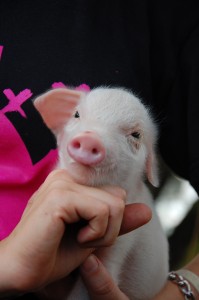There is no doubt that the PRRS virus is a vital health concern for swine producers. PRRS (porcine reproductive and respiratory syndrome) is a highly infectious and deadly virus. It is reported that PRRS is the most economically significant disease to affect US swine production since the eradication of classical swine fever (CSF). But EPI Air may help.
EPI Air may help PRRS infected pigs fight secondary infections. USDA-ARS tests have shown ionization to reduce pathogens in the air. Also, cleaner air leads to fewer challenges of the pigs’ respiratory systems. These two factors may help PRRS-infected pigs avoid secondary complications.
Dr. Gary Bradley, Research Center Coordinator at Murphy-Brown LLC directed trials of the EPI Technology in their nursery facilities. At a recent Pork Expo, he was asked if EPI technology could possibly reduce the movement of the PRRS Virus, Bradley only ventured, “That might be a possibility. I don’t think the negative ions could eliminate the virus from the barn. However, combined with the overhead positioning of EPI units perhaps a portable unit used at floor level could be ‘zapping’ viruses after the wash down.” He speculates there likely will be additional technology that branches off from the current EPI system. As a research scientist he’s more than willing and ready to further explore new ideas. “Preliminary results were phenomenal in our nursery units so we’re totally open to stretching our minds about a further spin off of EPI technology.”
The Canadian government also sees potential with the EPI Air and improving the productivity of hog herds while boosting the bottom line for those in the hog industry. The government of Canada, in support of the Manitoba Pork Council, is investing over $150,000 to help improve the air quality in swine barns with the EPI Air System. PRRS is reported to cost the Canadian industry an estimated $130 million per year; so using the EPI Air system to reduce and prevent the airborne transmission of PRRS is a sound investment.
EPI Air has been proven to increase average daily gain, increase average weights, and decrease mortalities. Knowing that the EPI Air makes such a significant impact on overall swine performance provides a positive outlook towards the possibilities that EPI Air also holds for PRRS.


